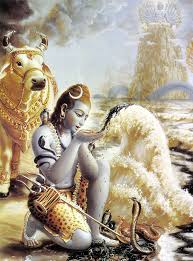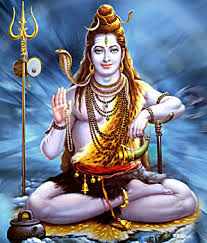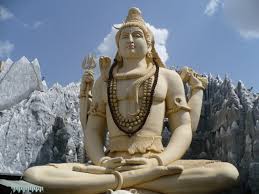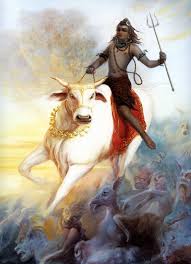 Srila Jagannatha dasa Babaji Maharaja comes in the Gaudiya Vaishnava disciplic succession after Srila Visvanatha Cakravarti Thakura and Srila Baladeva Vidyabhusana. He was a renounced ascetic, fully engaged in chanting the holy names of Krishna and meditating on the pastimes of Krishna. For some time he made his residence at Surya-kunda in Vraja-dhama, near the temple of Suryadeva, where Srimati Radharani used to come and worship the sun-god—or, I should say, where She used to come to meet Krishna on the pretext of coming to worship the sun-god.
Srila Jagannatha dasa Babaji Maharaja comes in the Gaudiya Vaishnava disciplic succession after Srila Visvanatha Cakravarti Thakura and Srila Baladeva Vidyabhusana. He was a renounced ascetic, fully engaged in chanting the holy names of Krishna and meditating on the pastimes of Krishna. For some time he made his residence at Surya-kunda in Vraja-dhama, near the temple of Suryadeva, where Srimati Radharani used to come and worship the sun-god—or, I should say, where She used to come to meet Krishna on the pretext of coming to worship the sun-god.
Srila Bhaktivinoda Thakura, who comes in the disciplic succession after Jagannatha dasa Babaji, accepted Srila Jagannatha dasa Babaji Maharaja as his main guru, his siksa-guru. Once, some of Jagannatha dasa Babaji’s disciples in Vraja approached the Thakura and complained that although they had come to Vraja to live like Jagannatha dasa Babaji Maharaja, fully absorbed in chanting the holy names and meditating on Sri Sri Radha-Krishna’s astakaliya-lila, Babaji Maharaja had refused to instruct them in such topics and had instead engaged them in cultivating flowers, vegetables, and tulasi plants to offer to the Lord. And they requested Bhaktivinoda Thakura to appeal to their guru maharaja to instruct them in the esoteric practices of Krishna consciousness.
Srila Bhaktivinoda Thakura told the disciples, “Actually, your gurudeva’s instructions are right for you. Because you still have anarthas, for you to try to sit and try to do nirjana-bhajana [solitary worship] and practice asta-kaliya-lila-smarana [meditation on the Lord’s eightfold daily pastimes] would be artificial, and you would just become degraded. So you should follow his instructions with full faith and work hard in Krishna’s service. Then, in time, you may be able to chant the holy names purely.”
Eventually, Jagannatha dasa Babaji Maharaja moved to Mayapur, where he lived by the banks of the Ganges, fully absorbed in chanting the holy names. He had the greatest reverence for the holy land of Navadvipa. Although he was so renounced and so absorbed in Krishna consciousness, as his reputation spread, gentlemen would come to him and give him donations. Once, Babaji Maharaja asked one of his servants to take the donations he had received, which he kept in an old burlap bag, and purchase a large pot of rasagullas. All the devotees were surprised, because Jagannatha dasa Babaji was so renounced and lived so simply; he would eat only the simplest rice and dal. Anyway, the servant brought the sweets, and Jagannatha dasa Babaji offered them to his Deities and then distributed them to the cows and dogs in the dhama. He said that the creatures of the dhama were elevated souls and worthy of service.
Later, Babaji Maharaja would not honor prasada until he had shared it with ten newborn puppies. He would wait until they came, and because in his old age his eyelids drooped over his eyes and prevented him from seeing, he would count them with his hands. Only after they had begun to eat would he also partake. He would say, “They are puppies of the dhama. They are not ordinary living entities.” He had so much faith in and affection for the dhama.
He had less affection for Mayavadi impersonalists. He used to say, “Let the dogs come in for darshan, but the impersonalists—kick them out!”
Srila Jagannatha dasa Babaji lived to a very old age. Some Vaishnavas say he was just waiting for Srila Bhaktivinoda Thakura to come—someone to whom he could impart his special knowledge and realization, for the benefit of humanity. Srila Bhaktivinoda Thakura requested to be transferred from his post in Orissa to Bengal so he could be near Navadvipa-dhama. And eventually he was posted at Krishnanagar, near Navadvipa.
Srila Bhaktivinoda Thakura did extensive research to determine the actual birthplace of Sri Chaitanya Mahaprabhu. He studied old maps, consulted the local people, and visited different places. Eventually he found a mound where many tulasi trees were growing. He got the intuition that this was the actual birthplace of Lord Chaitanya, but he wanted his intuition to be confirmed. At the time, Jagannatha dasa Babaji was the most renowned Vaishnava, and he was Srila Bhaktivinoda Thakura’s siksa-guru. So, Jagannatha dasa Babaji’s disciples brought him to the place with the mound and tulasi plants. He was so old—over a hundred and forty years old, some say—that his disciples had to carry him in a basket. The disciples brought him, but they didn’t tell him when they came to the site that Bhaktivinoda Thakura had determined was the birthplace. Still, when Babaji Maharaja arrived there, he spontaneously jumped out of his basket and began to dance in ecstasy, singing the holy names. Thus he confirmed the location of Mahaprabhu’s birthplace.
Srila Jagannatha dasa Babaji’s bhajana-kutira and samadhi are there in Navadvipa-dhama, in Koladvipa. Devotees who perform Navadvipa-parikrama visit there and get his mercy. We also pray to him for his mercy, that we may be instrumental in fulfilling the desires of Srila Bhaktivinoda Thakura, Srila Gaurakisora dasa Babaji Maharaja, Srila Bhaktisiddhanta Sarasvati Thakura, and the other acharyas in the line of Sri Chaitanya Mahaprabhu coming to us through Srila Prabhupada and his disciples.
Today especially we think of His Holiness Tamal Krishna Goswami Maharaja, who left this world on Jagannatha Dasa Babaji’s Disappearance Day, also in Gauda-mandala-bhumi. Two years ago I was in Dallas for the disappearance day of Srila Bhaktivinoda Thakura, just a few months after Goswami Maharaja passed away. As we were observing the ceremony in the temple, I was thinking how Goswami Maharaja was the perfect servant and therefore the fit representative of Srila Bhaktivinoda Thakura. Then I thought of him in relation to all of the acharyas in the last two centuries—Srila Bhaktivinoda Thakura, Srila Bhaktisiddhanta Sarasvati Thakura, and Srila Prabhupada (who are the most prominent of them)—and how he really took their mission to heart. He was absorbed in fulfilling all aspects of their mission: developing Mayapur, distributing books, spreading the chanting of the holy names throughout the world in various ways—all the programs that were so important to our predecessor acharyas.
Although I could speak of Goswami Maharaja’s surrender and service for days, today we have the rare opportunity to hear from His Grace Amoghalila dasa Adhikari. Amoghalila, could you please tell us something about your experiences with him and your realizations about him?
Amoghalila Prabhu:
I am thinking of one or two incidents I can mention, and some realizations I had from them. One was actually the last morning Srila Prabhupada was in Bombay, in Juhu. I was fortunate, actually by Giriraj Maharaja’s mercy, to be able to be in Srila Prabhupada’s room then. After about a month in Bombay, Srila Prabhupada was leaving that morning for Vrindavan. Madhava Prabhu and Upendra Prabhu were also there, though Upendra was in and out of the room.
Srila Prabhupada was just lying on his bed. He could hardly move. He couldn’t even sit up by himself. He was so weak he could barely speak. But then he said something. It was hard to hear what he said, so I leaned closer and asked, “What, Srila Prabhupada?” He said, “Call Tamal.” So Upendra Prabhu went out to get Tamal Krishna Maharaja. When Goswami Maharaja came into the room, he offered dandavat-pranama (prostrated obeisances) and then got up. Srila Prabhupada asked him about the arrangements for going to Vrindavan. Goswami Maharaja said, “Yes, Srila Prabhupada,” offered dandavat-pranama, and went out. A minute or two later, he came back in. He offered dandavat-pranama, got up, and then told Srila Prabhupada the answer to Prabhupada’s question. He said something, he got something ready, and then he offered dandavat-pranama and went out. This happened at least three times: He came in and went out, he came in and went out, he came in and went out, all within just a few minutes—it couldn’t have been more than five minutes. Practically every minute he was coming in, offering dandavat-pranama, getting up, talking to Prabhupada for a few seconds or half a minute, offering dandavat-pranama again, and going out.
Later, after Srila Prabhupada left us, when I was Goswami Maharaja’s personal secretary, I mentioned this to him, and he said, “Yes, Srila Prabhupada instructed me to do this. Srila Prabhupada said that because familiarity breeds contempt, it is very important when somebody is intimately serving the spiritual master that they keep a reverential mood.” Goswami Maharaja, of course, was such an intimate servant of Srila Prabhupada’s, yet he always maintained that deep reverence—of course love, also, but at the same time he always had such deep reverence for Srila Prabhupada. Tamal Krishna Maharaja is such an ideal example of a personal servant and disciple.
I am thinking of one other incident then, when I was Goswami Maharaja’s personal secretary in 1978 in Bombay. As I mentioned to Giriraj Maharaja, I think the real reason Goswami Maharaja wanted me to be his personal secretary was so he could train me, because he had seen how disturbing my mismanagement was. I had been the vice president and the so-called manager of Hare Krishna Land, and at one point during that time Giriraj Maharaja had mentioned to Tamal Krishna Maharaja, “Amoghalila is mismanaging the affairs here.” Goswami Maharaja had said, “There is no mismanagement . . . There is no management!” So, he felt that I needed some training in management. Therefore, he made me his personal secretary, to train me. I think that was the main reason, and he tried to train me and he did.
He did train me a lot, although I didn’t follow his training so well, but one incident when he trained me was very moving. Every time I think about it, I just . . . He was teaching me how to clean the floor. I mean, I had been a devotee for six or seven years, so I had been cleaning floors for a long time. Anyway, once, when I was cleaning the floor, he said, “No, that’s not how you clean the floor,” because I had the cloth bunched up or something. So, he took the cloth from me, got down on his hands and knees, spread the cloth out big, folded it over once, and started cleaning the floor. I tried to stop him; I said, “Maharaja, it’s okay, it’s okay. I’ll do it.” He responded, “No, I want to show you how to do it.” And he cleaned for quite a while. He cleaned a large area, and I was protesting, but he said, “No. Just watch what I am doing.” He had the cloth spread out quite big, and he cleaned for some time. I tried to stop him again, but he explained, “No, Srila Prabhupada did this to me. Srila Prabhupada showed me like this. He got down on his hands and knees and he cleaned the floor to show me how to do it. So why can’t you let me show you how to do it?”
So, Tamal Krishna Goswami was the perfect servant of Srila Prabhupada. And as you said, Maharaja, the perfect servant or ideal servant becomes the ideal representative. Goswami Maharaja was so strict in following Srila Prabhupada exactly, to the detail, even how you open up a cloth and fold it and clean the floor—every detail, everything! These are just a couple of little incidents I was thinking about.
Hare Krishna.
Giriraj Swami: When you began, saying how Tamal Krishna Goswami would come and offer full obeisances, I thought of what some devotees told me about his routine in Dallas after Srila Prabhupada left. Every night, he would go into Srila Prabhupada’s room where the deity of Srila Prabhupada was installed and chant his last Gayatri and put Srila Prabhupada to rest. He wanted to do that as his personal service. And they told me that whenever Goswami Maharaja would leave the temple premises, even for an hour or two, he would first circumambulate the building. They gave me the impression that he was circumambulating Srila Prabhupada, although, of course, he was circumambulating the other deities as well. But he was very conscious of Srila Prabhupada. In general, he was always very conscious of his lords and masters.
I also think of how after Srila Prabhupada left Goswami Maharaja distributed different remnants of Srila Prabhupada to different devotees. He had one of Srila Prabhupada’s teeth, which he had placed in a silver capsule and hung around his neck. Indradyumna Swami, who is quite expert in getting deities and sacred relics, once was asking Tamal Krishna Goswami about the tooth—what was eventually going to happen to it. And Tamal Krishna Goswami understood that Indradyumna Maharaja was trying to see if he could one day get the tooth. Goswami Maharaja just laughed and said, “Don’t even think of it! I am taking it with me. Even after I leave, it will stay with my body.” His idea was that by the tooth being put into his samadhi, people who circumambulated his samadhi or offered obeisances there would get the benefit of circumambulating Srila Prabhupada’s tooth, of offering obeisances to his tooth. And on the absolute platform, Srila Prabhupada’s tooth is as worshipable as he is.
Devotee: The tooth was kept with him, even when he was put into samadhi?
Giriraj Swami: Yes, it was always with him.
Hare Krishna!
[A talk by Giriraj Swami on Jagannatha dasa Babaji’s disappearance day, February 20, 2004, Carpinteria, California]
 By Vaisesika Dasa
By Vaisesika Dasa
 Srila Jagannatha dasa Babaji Maharaja comes in the Gaudiya Vaishnava disciplic succession after Srila Visvanatha Cakravarti Thakura and Srila Baladeva Vidyabhusana. He was a renounced ascetic, fully engaged in chanting the holy names of Krishna and meditating on the pastimes of Krishna. For some time he made his residence at Surya-kunda in Vraja-dhama, near the temple of Suryadeva, where Srimati Radharani used to come and worship the sun-god—or, I should say, where She used to come to meet Krishna on the pretext of coming to worship the sun-god.
Srila Jagannatha dasa Babaji Maharaja comes in the Gaudiya Vaishnava disciplic succession after Srila Visvanatha Cakravarti Thakura and Srila Baladeva Vidyabhusana. He was a renounced ascetic, fully engaged in chanting the holy names of Krishna and meditating on the pastimes of Krishna. For some time he made his residence at Surya-kunda in Vraja-dhama, near the temple of Suryadeva, where Srimati Radharani used to come and worship the sun-god—or, I should say, where She used to come to meet Krishna on the pretext of coming to worship the sun-god. By Mayapur.TV
By Mayapur.TV












 By ISKCON Mayapur
By ISKCON Mayapur
 By Krishna Ragini devi dasi
By Krishna Ragini devi dasi





